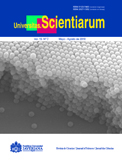Abstract
Abstract
Objective. Studies about sponge-zoanthid symbioses have been focused on understanding the specificity of the association, rather than testing what are the characteristics that make the host suitable to be colonized. For the first time it is investigated whether the Zoantharia Parazoanthus and Epizoanthus preference is related to the host sponge morphology (shape and mechanical resistance). Materials and methods. Sponges were categorized according to their shape and mechanical resistance. The presence/absence of zoanthids was recorded in 1,068 sponges at San Andres Island, and their habitat preference was evaluated using indices and confidence intervals. Results. 85 Parazoanthus colonies (78% of the total associations) and 24 Epizoanthus colonies (22%) were associated to sponges (10.2% in total). Parazoanthus uses branched and compressible sponges although prefers encrusting and fragile sponges, while Epizoanthus showes the opposite pattern, it can inhabit encrusting and fragile sponges but prefers branched and compressible sponges. Conclusion. These results indicated that sponge morphology is an important trait in zoanthid habitat selection. On the other hand, the similarity in the habitat used by zoanthids suggests the possibility of inter-generic competition if common resources are limited in time and space, while the differential habitat preference allows the competitive coexistence of both genera.
Key words: Epizoanthus, host, Parazoanthus, symbiont, sponge, morphology.
Univ. Sci. is registered under a Creative Commons Attribution 4.0 International Public License. Thus, this work may be reproduced, distributed, and publicly shared in digital format, as long as the names of the authors and Pontificia Universidad Javeriana are acknowledged. Others are allowed to quote, adapt, transform, auto-archive, republish, and create based on this material, for any purpose (even commercial ones), provided the authorship is duly acknowledged, a link to the original work is provided, and it is specified if changes have been made. Pontificia Universidad Javeriana does not hold the rights of published works and the authors are solely responsible for the contents of their works; they keep the moral, intellectual, privacy, and publicity rights. Approving the intervention of the work (review, copy-editing, translation, layout) and the following outreach, are granted through an use license and not through an assignment of rights. This means the journal and Pontificia Universidad Javeriana cannot be held responsible for any ethical malpractice by the authors. As a consequence of the protection granted by the use license, the journal is not required to publish recantations or modify information already published, unless the errata stems from the editorial management process. Publishing contents in this journal does not generate royalties for contributors.



